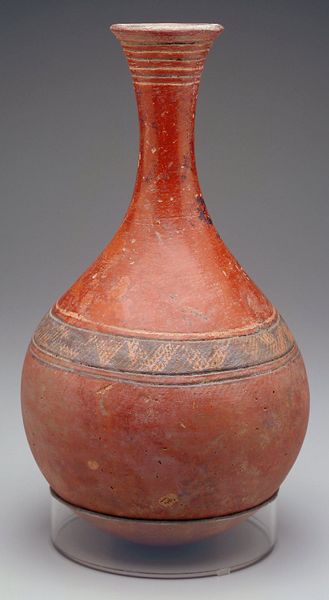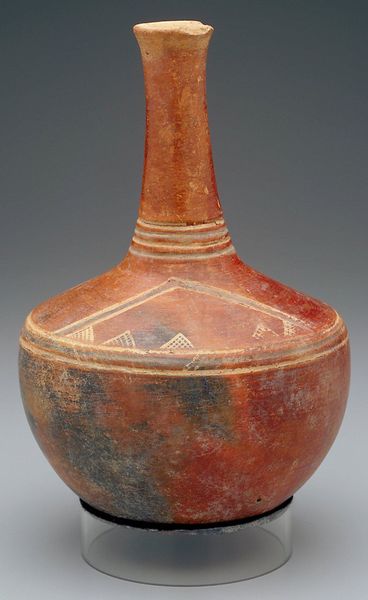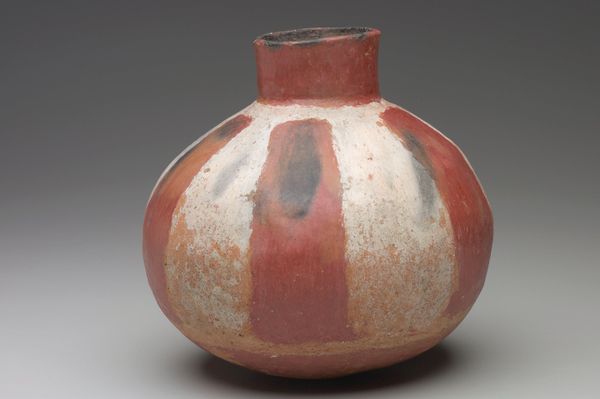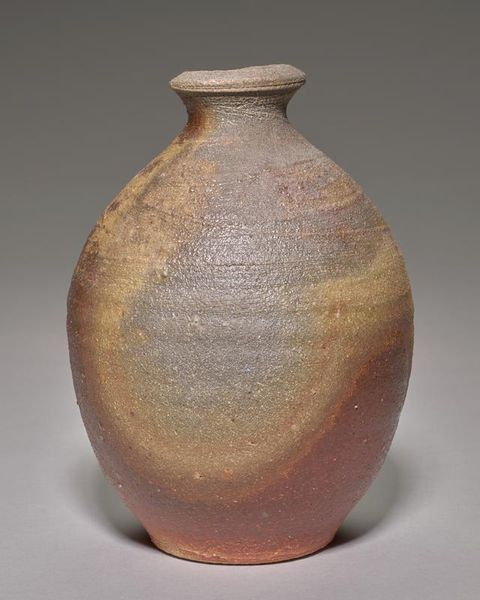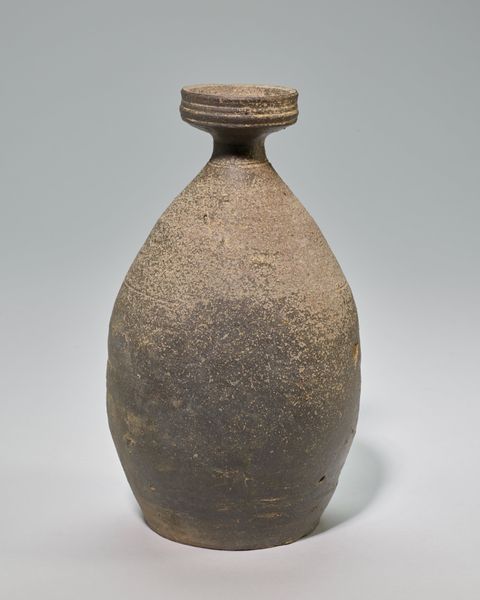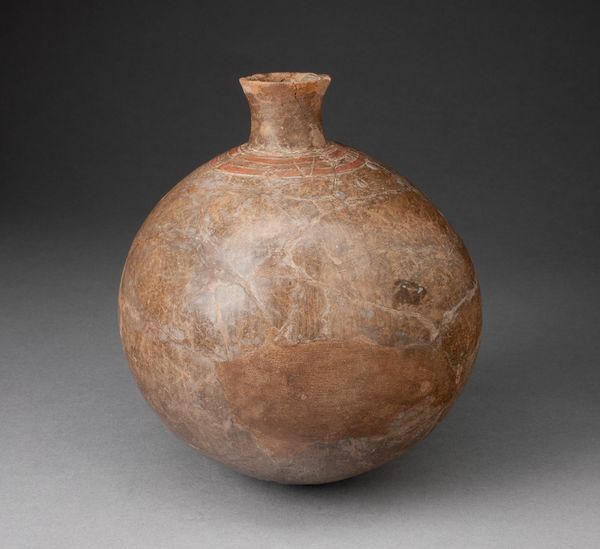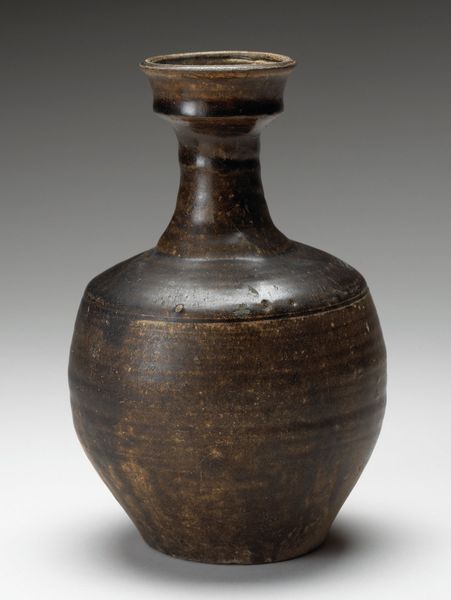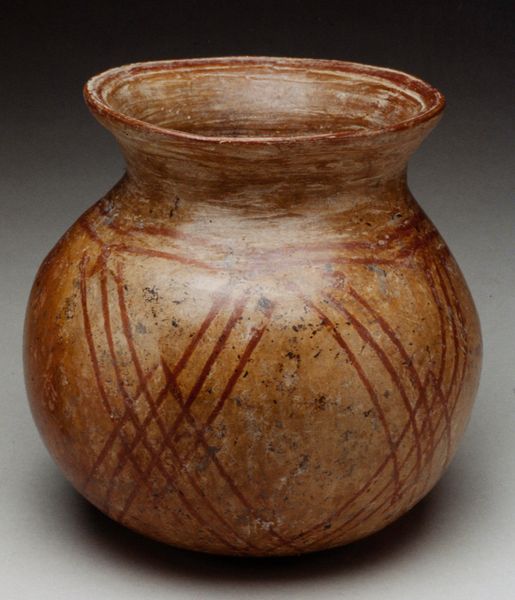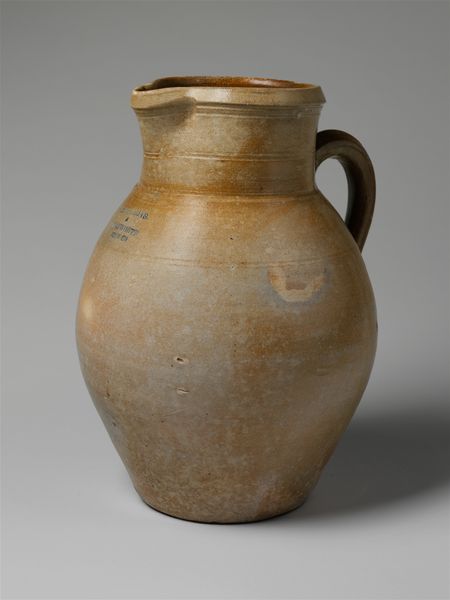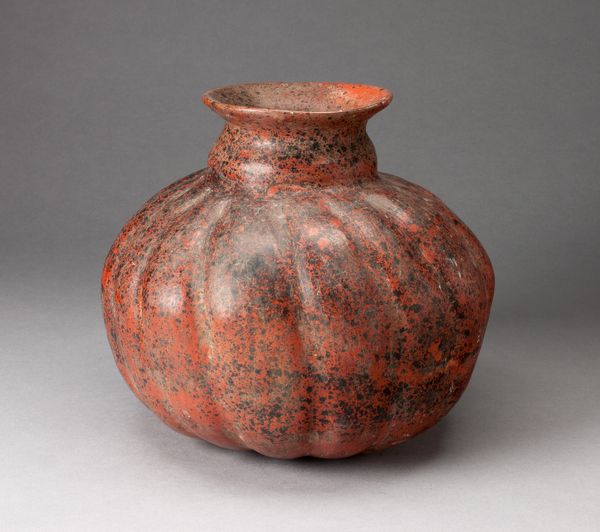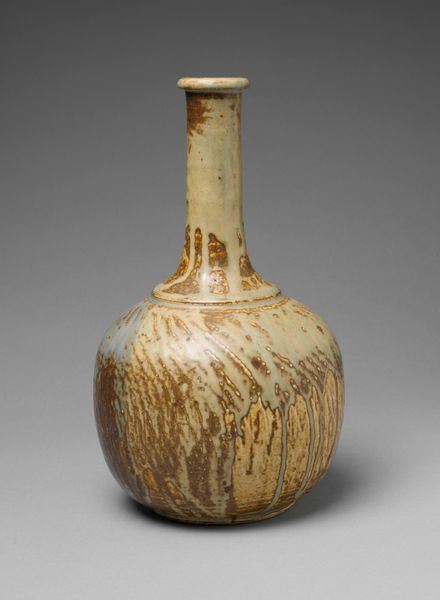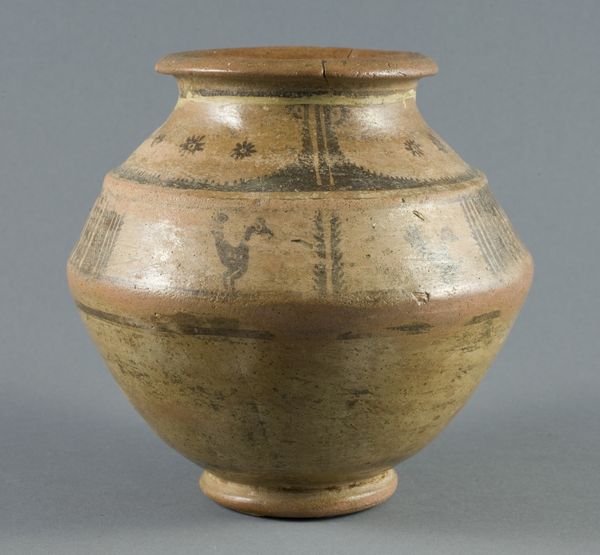
ceramic, earthenware, sculpture
#
ceramic
#
abstract
#
earthenware
#
stoneware
#
coloured pencil
#
sculpture
#
food art
Dimensions: 14 1/16 x 10 1/8 in. (35.72 x 25.72 cm)
Copyright: Public Domain
Curator: Here we have an earthenware pot, created by the Djenne people. The date of its creation is unknown, but it stands as a testament to enduring traditions. It's part of the collection at the Minneapolis Institute of Art. Editor: The color is striking, a deep, earthy terracotta that immediately grounds you. There's something both simple and profound in that globular form. Curator: Indeed, the color speaks volumes, echoing the very earth from which it was formed, rich in iron oxide, doesn't it? Consider its possible functions – storage, perhaps, or ritual use. Vessels like this connected communities, holding sustenance or sacred elements. Editor: I'm drawn to the narrow neck and flared lip, contrasted with the ample body. The few decorative touches, a band of geometric markings and some horizontal lines, feel restrained, but also significant. Do they hold particular meaning? Curator: Exactly, the sparse decorations around the neck—those thin bands and what looks like possibly woven geometric designs—invite contemplation. Could these patterns allude to specific social status, family lineage, or even tell a story understood by the community? Editor: And those horizontal lines draw my eye along the curves of the vessel, highlighting its volume. This sort of subtle detail seems important. In a time when technology allows more flamboyant art, I like how pared down this feels. Curator: Yes! Consider too that pottery often symbolized fertility and abundance, and such symbols acted as agents that were woven in with practical need and the psychological life. Editor: Knowing its possible associations really deepens the viewing experience. It's not just a container, but a tangible link to a whole worldview. Curator: Precisely, this pot reflects the intertwined relationship between humanity and our cultural memory that these shapes still echo. Editor: Absolutely, reflecting on it all, it's this ability to connect the past to our present moment, that makes the pot a really stunning piece.
Comments
minneapolisinstituteofart almost 2 years ago
⋮
Today, Mia would no longer acquire this kind of vessel. Dating from the 1400s, it comes from the Inner Niger Delta in Mali. For over a thousand years, this region was a hub of culture and commerce based on trans-Saharan trade. The soil there is extremely rich in archaeological materials, enticing looters to destroy entire sites in search of antiquities to sell. In 1997, the United States and Mali signed a Cultural Property Agreement, which protects Mali’s exceptional patrimony and restricts the import of archaeological objects. For now, Mia has decided to present this pot to the public as an opportunity to raise awareness of archaeological looting in Africa and elsewhere and to remind us that art museums once benefited from those illegal activities.
Join the conversation
Join millions of artists and users on Artera today and experience the ultimate creative platform.
